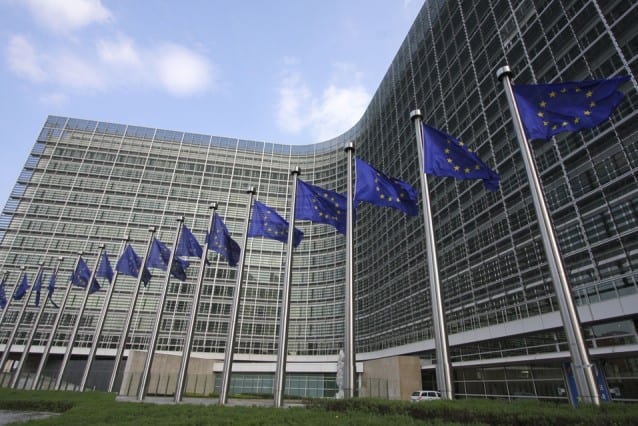The European Commission laid out a new set of climate goals today, including a pledge to cut greenhouse gas emissions 40 percent below 1990 levels by 2030.
The targets are mostly binding for every member state of the European Union (EU), and the negotiations reportedly involved intense wrangling right up to the last minute. The major points of the agreement include:
- A 40 percent cut in greenhouse gas emissions from their 1990 levels by 2030. The previous target, set in 2007, was for a 20 percent cut from the 1990 levels by 2020. Even today observers had worried the Commission might opt for a 35 percent cut instead.
- Getting 27 percent of the EU’s energy from renewables by 2030. The 2007 target was 20 percent by 2020.
- Improved energy efficiency. The ostensible goal is a 25 percent increase in efficiency by 2030, but unlike the other targets it isn’t binding. The previous goal was a 20 percent increase by 2020.
The agreement involves a few other goals, such as reforming the EU emissions trading system (ETS) — which hit significant trouble in the last few years, thanks partially to the recession and partially to poor design — and new-and-improved systems for monitoring compliance and progress. It also punted on applying any real legal oversight to shale gas development, thanks largely to a lobbying push from the British government.
Reaction to the goals, both positive and negative, was swift. Environmental groupsdenounced them as inadequate, and Greenpeace in particular said a meaningful effort to tackle climate change would require a 55 percent cut in emissions by 2030. In December, Kevin Anderson, a climate scientists at the Tyndall Center, sent an open letter to the European Commission, insisted an 80 percent cut by 2030 was needed to keep global warming below the 2°C threshold. The commissioners themselves defended the agreementas a real step forward that made the most of what was realistically possible.
The EU has already essentially reached the previous goal of a 20 percent cut in emissions — seven years ahead of schedule — suggesting the European Commission has a habit of underestimating how swiftly and deeply the European economy can actually reduce its contributions to climate change.

A major study from the Potsdam Institute for Climate Impact Research, along with 11 other supporting research groups, recently concluded that the 40 percent cut by 2030 would cost a mere 0.7 percent of the European economy. The technologies necessary to make it happen are low-cost and already in the pipeline: further deployment of renewable energy, more energy efficiency, and more nuclear power, for example.
EU leaders have proposed an even more ambitious long-term cut in emissions: 80 percent below 1990 levels by 2050. The study acknowledged that new technologies that aren’t currently available will be needed to hit that target. But lead researcher Brigitte Knopfpointed out that setting ambitious targets now — through mechanisms like the ETS — will send price signals throughout the European economy to spur that innovation.
As a territory, Europe is the world’s third largest carbon emitter, just behind North America in second place and Asia in first place. Europe’s carbon emissions per person are also significantly lower than North America’s.
The framework makes the EU the first group of nations to lay down concrete emissions targets ahead of the international climate talks in Paris in 2015, though the goals still have to be agreed upon by the EU parliament.
Source: Climate Progress. Reproduced with permission.










